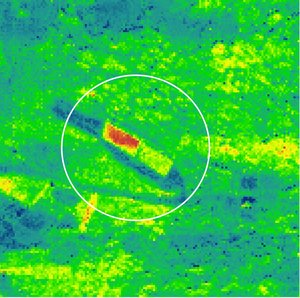New satellite to measure plant health
ESA plans to track the health of the world’s vegetation by detecting and measuring the faint glow that plants give off as they convert sunlight and the atmosphere’s carbon dioxide into energy.
Yielding information about the health and stress of the planet’s vegetation is important as the growing global population places increasing demands on the production of food and animal feed.
Following a rigorous selection process, the satellite will be ESA’s eighth Earth Explorer, planned for launch by 2022.
As well as yielding important information about plant health, the Fluorescence Explorer – FLEX – satellite will improve our understanding of the way carbon moves between plants and the atmosphere and how photosynthesis affects the carbon and water cycles.
The conversion of atmospheric carbon dioxide and sunlight into energy-rich carbohydrates through photosynthesis is one of the most fundamental processes on Earth – and one on which we all depend.
Although most people have heard of photosynthesis, the process involves an extremely complex chain of events.
Working in sequence, there are two different ‘solar power systems’ inside plant and algae cells. They collect energy in sunlight and produce chemical energy for photosynthesis and heat.
In addition, the process involves a faint fluorescence, subject to environmental conditions and the health of the plant.

At the moment, photosynthetic activity cannot be measured from space, but FLEX’s novel sensor will observe this faint glow.
FLEX will orbit in tandem with one of the Copernicus Sentinel-3 satellites, taking advantage of its optical and thermal sensors to provide an integrated package of measurements.
Jan Woerner, ESA’s Director General, said, “FLEX will give us new information on the actual productivity of vegetation that can be used to support agricultural management and the development of a sustainable bioeconomy. It will therefore help to understand our ecosystem.”
“With the selection of the FLEX mission, ESA Member States have continued to show their determination to provide essential data to the scientific community to better understand our planet while at the same time serving society.”
Volker Liebig, ESA’s Director of Earth Observation Programmes, added, “The selection of FLEX is an important milestone in our series of Earth Explorer missions.
“FLEX will give us a better understanding of an important part of the carbon cycle and provide important information about the health and stress of the planet’s vegetation.
“Through this, FLEX might make a contribution to the understanding of feeding the increasing population of our planet.”

Harnessing Europe’s technological excellence, ESA’s family of Earth Explorer missions is designed to exploit new ways of observing Earth from space to improve our understanding of how our planet works as a system, as well as a better appreciation of the impact human activity is having on the natural world.
They are defined, developed and operated in close cooperation with the scientific community so that pressing Earth-science questions are addressed as effectively as possible.
The completed GOCE mission mapped variations in Earth’s gravity with extreme detail and accuracy. Three missions in orbit now are providing new insight into Earth’s cryosphere, soil moisture and ocean salinity, and the magnetic field. Future Explorers will provide new insight into wind, forest biomass and the effect of clouds and aerosols on Earth’s handling of sunlight.








